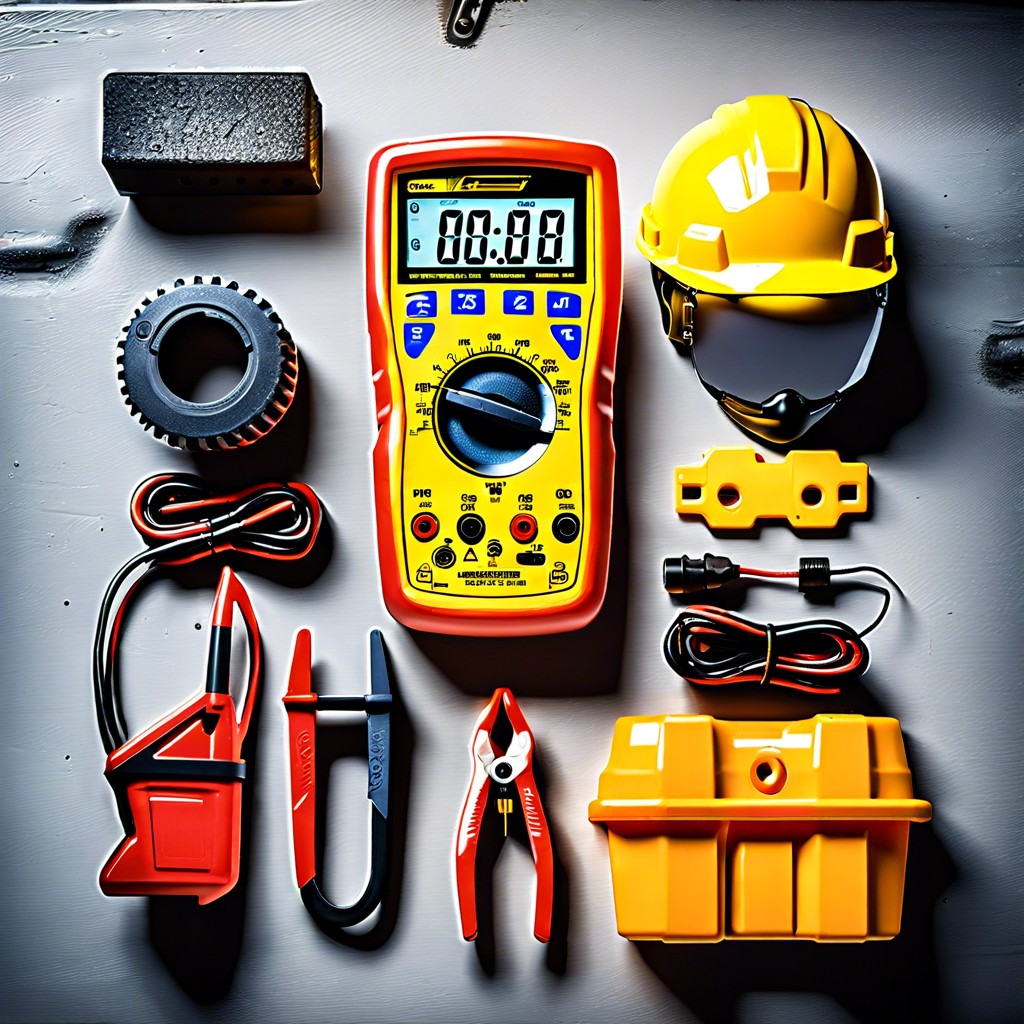Learn how to test your garage door sensors using a multimeter to ensure they’re working correctly.
Key takeaways:
- Ensure garage door opener is unplugged.
- Align sensors and check for dirt or damage.
- Inspect and tighten loose connections.
- Set multimeter to DC voltage for testing.
- Expect around 5 volts for proper sensor function.
Safety First

Before diving in, ensure the garage door opener is unplugged. Electricity and curiosity don’t always mix well!
Wear safety goggles. You never know when a loose wire might decide to spring like a jack-in-the-box.
Keep a flashlight handy; garage nooks and crannies are darker than your last Monday morning.
Secure the garage door in the open position to avoid unexpected close encounters. No one likes a heavy surprise!
Gather Necessary Supplies
You’ll need just a few items to get started. First, you absolutely need a multimeter, the trusty gadget that will read the voltage and continuity. If you don’t have one, borrow from your neighbor who collects tools like they’re action figures.
Next on the list is a ladder, assuming your garage isn’t Hobbit-sized. It helps you reach those potentially tricky sensors without the need for gymnastic skills.
Don’t forget a screwdriver. Sensors are usually held in place by screws that can be removed for better inspection. And hey, keep a notepad and pen handy for jotting down any readings. Yes, paper still has its uses!
Lastly, grab a flashlight. Garages are notorious for their lighting, almost like they’re hiding secrets in the shadows. Trust me, seeing what you’re working on is a game-changer.
Visual Inspection
Start by taking a good look at the sensors and their surrounding area. These little gadgets are pretty straightforward but can be sneaky troublemakers.
Check if the sensors are aligned properly. They should be facing each other directly, usually with lights on them glowing the same color.
Inspect the lens for dirt or cobwebs. Sensors can’t do their job if they can’t see each other. A gentle wipe with a soft cloth can work wonders.
Ensure there’s no physical damage. Cracked lenses or broken wires are clear signs your garage door sensors need some TLC.
Keep an eye out for any obstructions. Sometimes, stray leaves or a playful cat toy might block the sensor’s path.
Remember to look at the bracket or holder. A loose mount can cause misalignment, so tighten any screws if needed.
Visual inspection can save you some headaches. It’s like the detective work before the real action begins.
Check for Loose Connections
Start by examining the wires connecting the sensors to the garage door opener. Sometimes, the culprit is nothing more than a loose wire causing all the headache.
First, ensure the unit is powered off to avoid any unexpected surprises or accidental zaps—unless you enjoy spontaneous hair frisks.
Next, gently tug at the wires. If you notice any wobbly connections or wires that slide out too easily, tighten them up. The connections should be snug, like a well-wrapped burrito.
If any wires appear frayed or damaged, it might be time to replace them altogether. Trust us, duct tape is not a long-term solution here.
Lastly, double-check the terminal screws. A quick twist may be all that’s required to secure them properly, ensuring your sensors are in tip-top shape.
Test Voltage
Now, you’ve arrived at the exciting part: testing with the multimeter. First, set your multimeter to the DC voltage setting. You’re about to become quite the garage door doctor!
Identify the sensor wires. You’ll typically find a pair of wires running to each sensor. Using your multimeter probes, touch one probe to each of the wires connected to the sensor.
In a well-behaved world, the multimeter should show a reading around 5 volts. If you’re getting a different value, your sensors might be begging for attention, or at least a stern talking-to.
If the reading is way off, double-check your connections before declaring the sensors uncooperative. Sometimes even your tools just want to keep you on your toes.